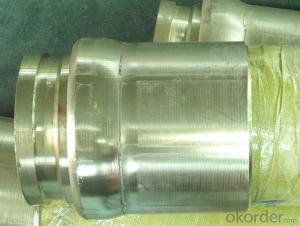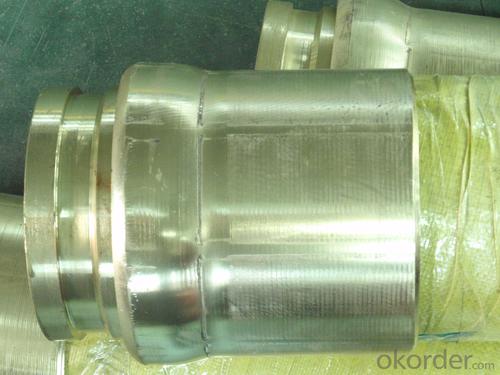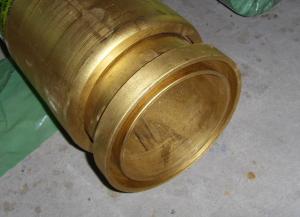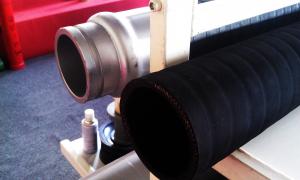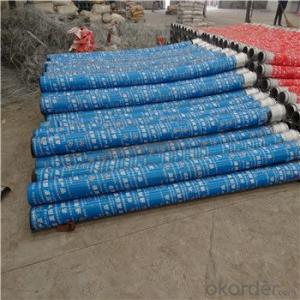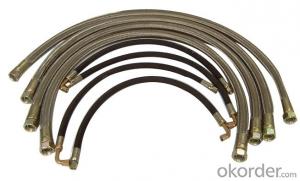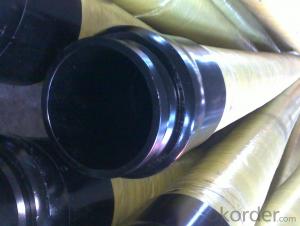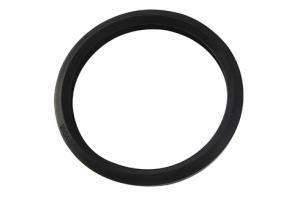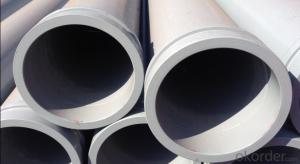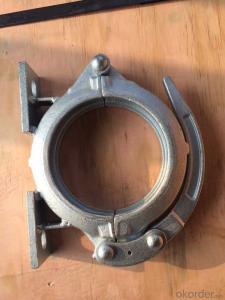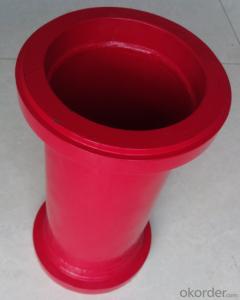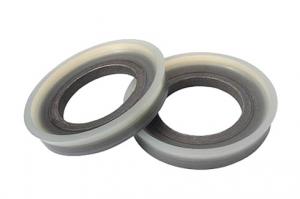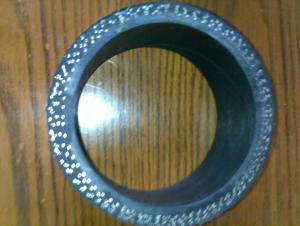Concrete pump rubber end hose wiht coppering flange
- Loading Port:
- China Main Port
- Payment Terms:
- TT OR LC
- Min Order Qty:
- -
- Supply Capability:
- -
OKorder Service Pledge
OKorder Financial Service
You Might Also Like

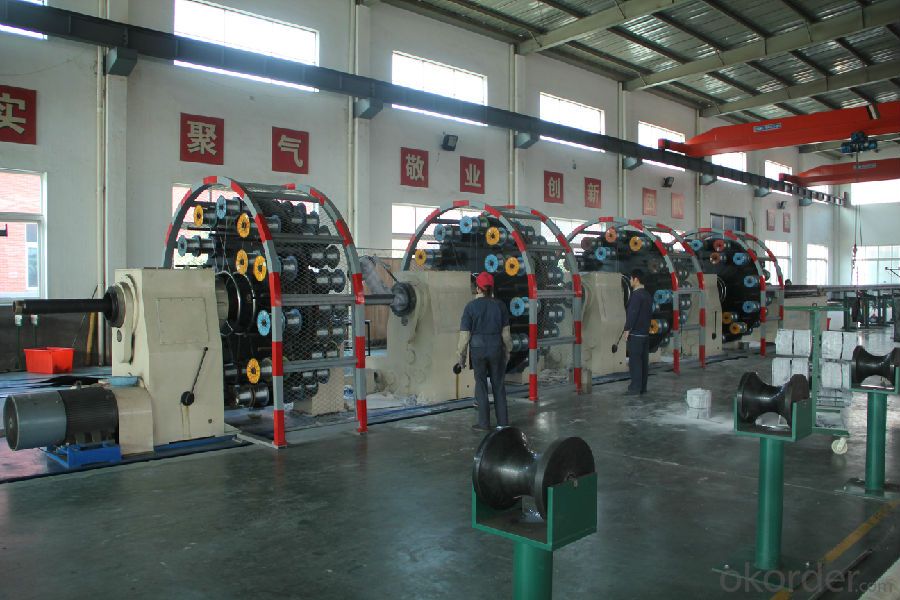
concrete pump rubber hose
1.Steel hose
2.2 or 4 piles of steel wires for your choose.
CONCRETEPUMP RUBBER HOSE
3.Work Pressure:85~1250(BAR/PSI)
4.Burst Pressure:200 to 2940(BAR/PSI)
5.Working life:20000m³
6.The inside of hose is high abrasionresistant.
7.Integrated hose end and inner wallharden,prolong work life.
Relevant Information:
Name | Concrete rubber hose; Delivery hose; End hose; Concrete pump hose; Boom hose |
Size | 2"/2.5"/3"/3.5"/4"/4.5"/5"/6"or according to client’s requirement |
Length | 3M,5 or Any length |
Reinforcement | Steel wire, tire cord or fabric |
Hose End | Galvanized, inner wall harden |
Application | Schwing, Putzmeister, Sany, Zoomlion, etc |
- Q: Are there any safety considerations when using concrete pump spare parts?
- Yes, there are several safety considerations that should be taken into account when using concrete pump spare parts. Firstly, it is important to ensure that the spare parts are of high quality and are compatible with the specific make and model of the concrete pump. Using substandard or incorrect spare parts can lead to equipment failure, which can be dangerous for the operator and those working in the vicinity. Additionally, proper maintenance and inspection of the spare parts is crucial for safety. Regularly inspecting the parts for any signs of wear or damage can help identify potential issues before they cause accidents or equipment failure. It is also important to follow the manufacturer's guidelines for maintenance and replacement intervals. When using concrete pump spare parts, it is essential to follow all safety procedures and protocols. This includes wearing appropriate personal protective equipment (PPE), such as safety goggles, gloves, and steel-toed boots. It is also important to ensure that all operators are trained in the proper use of the equipment and understand the potential hazards involved. Furthermore, it is crucial to follow safe operating practices when using concrete pump spare parts. This includes maintaining a safe distance from the working area, ensuring that the concrete pump is stable and secure, and avoiding overloading or exceeding the recommended operating capacity. By considering these safety considerations and following proper procedures, the risks associated with using concrete pump spare parts can be minimized, ensuring the safety of operators and those working on the construction site.
- Q: How to diagnose the blockage in the inlet of concrete pump?
- Make the pump reverse running to destroy the caking, return the concrete to the hopper, stir it again, and then pump it forward
- Q: What is the role of a concrete pump spectacle plate?
- The main purpose of a concrete pump spectacle plate is to provide a stable and secure platform for the concrete pump to rest on while it is in operation. It serves as a support base for the pump, ensuring that it remains steady and balanced while it pumps concrete. The spectacle plate is typically constructed using durable materials like steel or alloy, which can withstand the weight and pressure exerted by the pump. Its design incorporates various features, such as slots or holes, which allow for the attachment of accessories like clamps or pipes. This facilitates a smooth and efficient transfer of concrete from the pump to the desired location. Additionally, the spectacle plate may also have adjustable elements that enable positioning and alignment adjustments, ensuring precise placement of the concrete. In summary, the spectacle plate is essential for maintaining the stability and functionality of the concrete pump, thereby contributing to the successful completion of construction projects.
- Q: How often should concrete pump gearboxes be inspected and maintained?
- To ensure optimal performance and a long lifespan, it is essential to regularly inspect and maintain concrete pump gearboxes. The frequency of these inspections and maintenance tasks depends on various factors, including the concrete pump's usage, working environment, and the manufacturer's recommendations. Typically, a comprehensive inspection and maintenance should be carried out at least once a year. However, if the concrete pump experiences heavy usage or operates in harsh conditions, more frequent inspections may be required, such as every six months or even quarterly. During these regular maintenance sessions, it is crucial to check for any signs of wear and tear, lubricate gears and bearings, and replace any worn-out or damaged parts. Adhering to the manufacturer's guidelines and seeking professional advice is important if there are any concerns or specific requirements for the concrete pump gearbox. By conducting regular inspections and maintenance, potential issues can be detected early on and promptly resolved, ensuring the smooth and efficient operation of the concrete pump gearboxes.
- Q: How can one determine the correct size and dimensions of concrete pump spare parts?
- To determine the correct size and dimensions of concrete pump spare parts, one should refer to the manufacturer's specifications and documentation. These documents typically provide detailed information about the specific measurements and dimensions required for each spare part. Additionally, consulting with experts or professionals in the field can also help in identifying the correct size and dimensions based on the specific make and model of the concrete pump.
- Q: How can I determine if the concrete pump cylinder needs replacement?
- To determine if the concrete pump cylinder needs replacement, you should inspect it for any visible signs of wear or damage. Look for cracks, leaks, or excessive corrosion on the cylinder. Additionally, monitor the pump's performance and check if there are any irregularities or issues during operation, such as decreased pumping efficiency or increased noise. It is also recommended to consult with a professional concrete pump technician or manufacturer for a thorough inspection and assessment of the cylinder's condition.
- Q: Do concrete pump spare parts come with a warranty?
- Certainly, a warranty is provided for concrete pump spare parts. The duration of the warranty may differ depending on the manufacturer and the specific part being acquired. Typically, well-established manufacturers and suppliers offer warranties on their spare parts to instill confidence in customers regarding the product's quality and dependability. It is crucial to thoroughly examine the warranty's terms and conditions to comprehend the coverage and duration. Should any flaws or complications arise within the warranty period, customers can usually obtain a replacement or have the part repaired without incurring any additional expenses.
- Q: Can I get spare parts for concrete pump wear plates and cutting rings?
- Yes, you can definitely get spare parts for concrete pump wear plates and cutting rings. These parts are essential for the smooth operation and performance of a concrete pump. Many manufacturers and suppliers specialize in providing spare parts for concrete pumps, including wear plates and cutting rings. You can contact these suppliers or manufacturers directly to inquire about the availability and pricing of these spare parts. Additionally, there are also online platforms and marketplaces where you can find a wide range of spare parts for various concrete pump models. It is always recommended to ensure that you purchase genuine and high-quality spare parts to guarantee the longevity and efficiency of your concrete pump.
- Q: Can concrete pump valves be repaired or should they be replaced?
- Concrete pump valves can often be repaired instead of being replaced. The decision to repair or replace a concrete pump valve depends on the extent of the damage and the cost-effectiveness of each option. In some cases, minor issues such as clogs or leaks can be easily fixed by cleaning or replacing smaller components. However, if the valve is severely damaged or worn out, replacement may be the more practical solution. It is recommended to consult with a professional concrete pump technician to assess the condition of the valve and determine the best course of action.
- Q: Can a concrete pump pipe be repaired or should it be replaced?
- Repairing a concrete pump pipe is possible in certain cases, but the ultimate outcome relies on the level of damage and the particular circumstances involved. Specialized techniques like welding or epoxy injections are often sufficient for minor cracks or small areas of damage. However, if the damage is extensive, severe, or jeopardizes the pipe's structural integrity, it may be more practical and safer to replace the entire pipe. Before making a decision between repair or replacement, it is crucial to thoroughly evaluate the condition of the concrete pump pipe. Factors such as the pipe's age, the overall pump condition, and the frequency of use should be taken into account. Consulting a professional or an experienced concrete pump technician is recommended to determine the most suitable course of action. In conclusion, while it is possible to repair a concrete pump pipe, the choice between repair and replacement should be based on factors including the extent of damage, cost-effectiveness, and safety considerations.
Send your message to us
Concrete pump rubber end hose wiht coppering flange
- Loading Port:
- China Main Port
- Payment Terms:
- TT OR LC
- Min Order Qty:
- -
- Supply Capability:
- -
OKorder Service Pledge
OKorder Financial Service
Similar products
Hot products
Hot Searches
Related keywords
